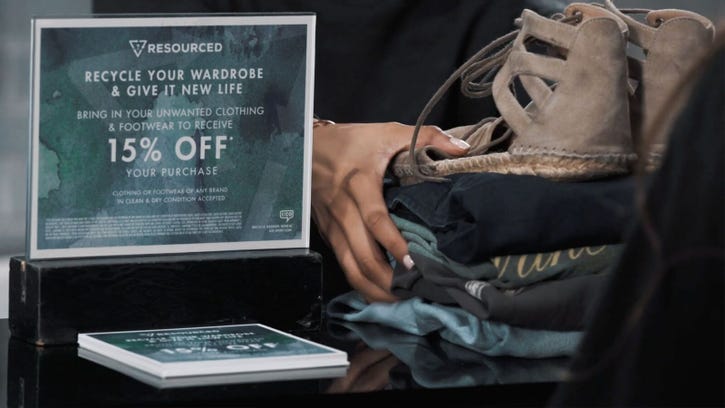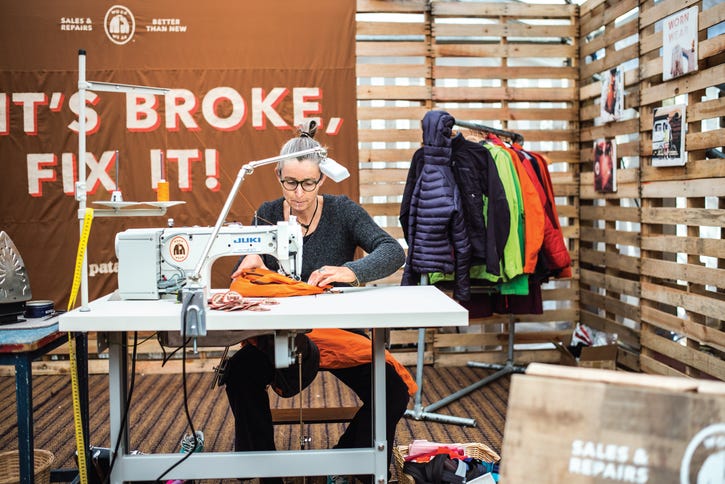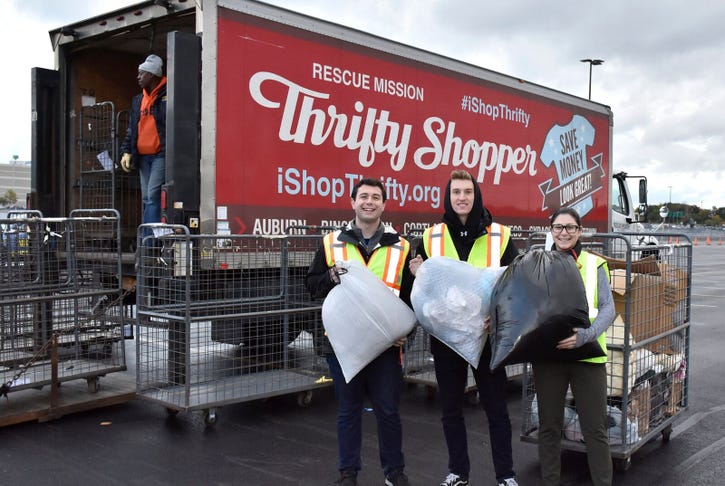Brands Called On to See Discarded Clothes Find Second Home
Several companies are working to see that clothes are salvaged—either by providing logistics services to brands or implementing their own program.

Clothing production has doubled in the past 15 years, and as styles come and go, it’s estimated that more than half of this “fast fashion” is discarded in less than a year, reports the Ellen MacArthur Foundation.
Most end-of-life garments stockpile on landfills, becoming municipalities’ problem—a problem that will likely worsen, projects Joanne Brasch, special projects manager for National Stewardship Action Council and a textiles professor at the University of California, Davis.
“Some brands are starting to address the issues through takeback programs. But many bring in a very low volume compared to what they are manufacturing,” she says.
“The textiles industry is very large, and the potential impact would be greater if more brands would collaborate with their supply system and retailers—and beyond having a simple collection program,” adds Brasch.
Several companies are doing interesting work to see that clothes are salvaged, whether providing logistics services to brands, or whether it is the brand that has its own program.

I:Collect (I:CO) works with more than 40 fashion companies globally, collecting, sorting and moving commodities into markets for reuse or recycling. Some I:CO partners are H&M, Columbia, GUESS and Royal Robbins.
About 60 percent of what these brands collect is re-wearable and most of that is resold. Much of the remainder is recycled, says Jennifer Gilbert, I:CO chief marketing officer.
“We want to make it easy for brands and for consumers. The key is a convenient takeback system, so consumers can go into our partners’ stores with clean, dry clothes and shoes of any brand,” she says.
GUESS is one of the newest companies to sign on. The company piloted an in-store takeback program in June 2018 and has since rolled it out to 295 stores.
Many I:CO partners are making money or breaking even by reclaiming otherwise wasted garments. And some are reinvesting the revenue in charity or recycling innovations.
But the industry at large has not made the shift, at least, in part, because it takes more than a sustainability department to make it happen.
“It involves all operations from visual merchandising, to public relations, to training staff. Integrating many departments takes time,” says Gilbert.

Eileen Fisher’s customers can return used clothes to stores for a $5 credit per piece, with net profits from resales donated to charity. Clothing is cleaned and sorted, and minor repairs are done if needed. What’s in excellent condition is sold in one of the company’s Renew stores and in other select locations. The rest becomes raw material for designs in the company’s Tiny Factory in Irvington, N.Y.
The company has taken back more than one million garments, about 55 to 65 percent of which is resold, says Kerri Ulloa, Eileen Fisher’s brand and marketing specialist.
“Our future plans are to expand the Renew distribution across retail and online [outlets]. And we will continue to expand the Tiny Factory to create innovative product,” says Ulloa.
Outdoor apparel manufacturer Patagonia does in-store trades and has a mobile center that does repairs and teaches consumers how to mend clothes. It does minor repairs of its brand in all its stores and has a facility in Reno, Nev., that does more substantial work like putting in zippers. Restored merchandise is sold online. What’s not fixable is recycled.
“We see benefits to incentivizing customers to trade in gear while attracting customers looking for more affordable, repurposed clothes,” says Tessa Byars, communications manager for Patagonia.
It works out economically for the company, too.
“Our main expenses are trade-in costs [payments to customers], cleaning and posting online, but we make money by selling used gear,” she says.
Patagonia did just shy of 74,000 repairs in 2017. And it recycled 17,272 pounds of garments.

Some municipalities are also salvaging unwanted clothing. Onondaga County Resource Recovery Agency in New York periodically holds collection events in partnership with New York-based Rescue Mission and Salvation Army. It also has drop-off sites and informs residents of these resources through a quarterly newsletter, social media and email blasts.
Still, about 25 million pounds of textiles end up in the county’s landfill per year.
“The government does not have the capacity to keep the message ongoing day in and out,” says Andrew Radin, director of recycling for the Onondaga County Resource Recovery Agency and chair of the New York Product Stewardship Council.
“While I applaud brand owners encouraging recovery of their unwanted clothes, the industry needs to do more. They need to help us change human behavior. More brands should take material back, and/or remind customers that when they are done with clothes, they should be donated. And [this outreach] should be done in a high-profile way. It has to be meaningful—not just a PR campaign,” says Radin.
About the Author
You May Also Like




